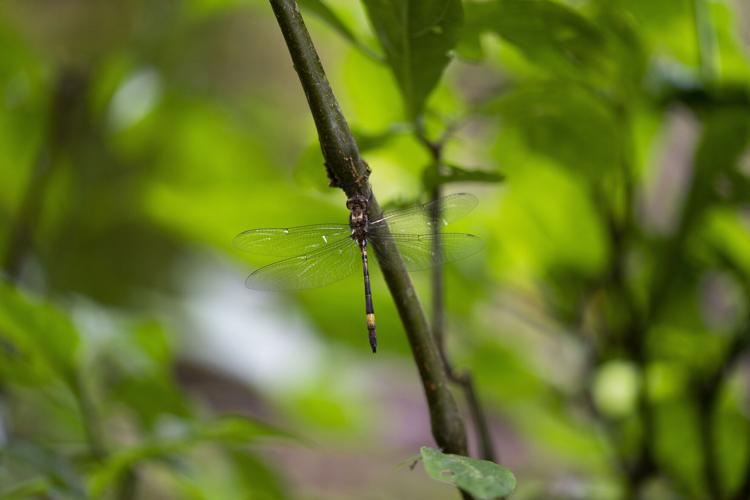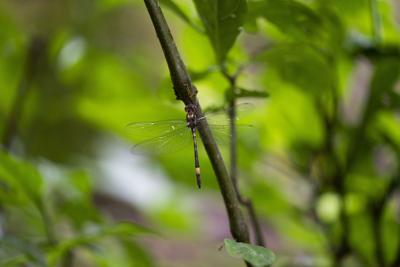Dragonflies are spectacular insects in Texas aquatic gardens with over 150 species (of 3,000 living species worldwide) in this state.
Originally called ‘Devil’s fly’ due to its large size, the name ‘dragonfly’ comes from the translation of the Romanian word for Devil, which is ‘drac’ or dragon. This insect lives up to its name with the largest dragonfly found in Texas with a wing span of 5 inches (giant darner, Anax walsinghami).
In addition to being a giant flying insect, dragonflies earn their name by being fierce predators.
They will attack most small flying objects in the air, anything they can catch. Even dragonfly nymphs (juvenile stage) will prey on other insect larvae, worms, crustaceans, snails, tadpoles and small fish they find in their aquatic habitat.
Trying to capture a dragonfly is a challenge due to its amazing flying ability and enormous compound eyes. These insects can fly forward, backwards, hover, make sharp turns and fly in excess of 20 miles per hour. Excellent vision contributes to a catch rate of 95% while hunting prey. Two compound eyes, each containing up to 30,000 facets (or lens), cover most of the insect’s head and allows it to see over almost 360 degrees.
Rather than trying to capture dragonflies, enjoy them as a barometer of a healthy aquatic garden environment. Understanding the mating conditions and life cycle is key to attracting them to your garden. Dragonflies mate at or very near aquatic environments because the juvenile stage of dragonflies, the nymph, depends on fresh water and spends up to 2 years in this stage. Several molts advance the nymph into larger sizes until the last molt results in the sexually mature adult dragonfly which is keen on mating to start another life cycle. Recognizing what dragonflies need to reproduce and mature is key to providing a habitat that will attract them.
Dragonflies depend on freshwater for reproduction and, as a result, there they find their primary prey. This habitat is critical to attracting and ensuring the survival and growth of the juvenile nymph stage (the majority of the life cycle). Nymphs prey on aquatic insects (water beetles, mosquito larvae) and larger prey (worms, tadpoles and minnows). After several molts, the large nymph will crawl out of the water onto a dry surface and undergo metamorphosis into an adult dragonfly that can mate. Adults feed on mosquitoes, midges, flies and winged ants.
Which dragonfly will you see in your aquatic garden? Common Skimmers (Libellula luctosa) are the most common of the dragonfly family (Odonata, Anisoptera). They are easily identified as having two pairs of large, gossamer wings and come in a variety of patterns and colors such as the Flame skimmer, Common whitetail skimmer, and Black Saddlebags skimmer. These beneficial insects fly low over the water and hover over their prey. As an indicator species, Dragonflies are a sign of a healthy aquatic environment and clean water.












